This document summarizes an article on environmental protection laws in India. It discusses how environmental degradation has increased due to factors like population growth, urbanization, and industrialization. It then describes India's Environmental Protection Act of 1986, which aims to coordinate regulatory agencies, create authorities to protect the environment, regulate pollution discharge, and punish those who endanger the environment. Next, it lists some of the major environmental challenges India faces, such as water pollution, air pollution, deforestation, and land degradation. It concludes by outlining some key aspects of the Environmental Protection Act, including its objectives and powers granted to the central government to protect the environment.
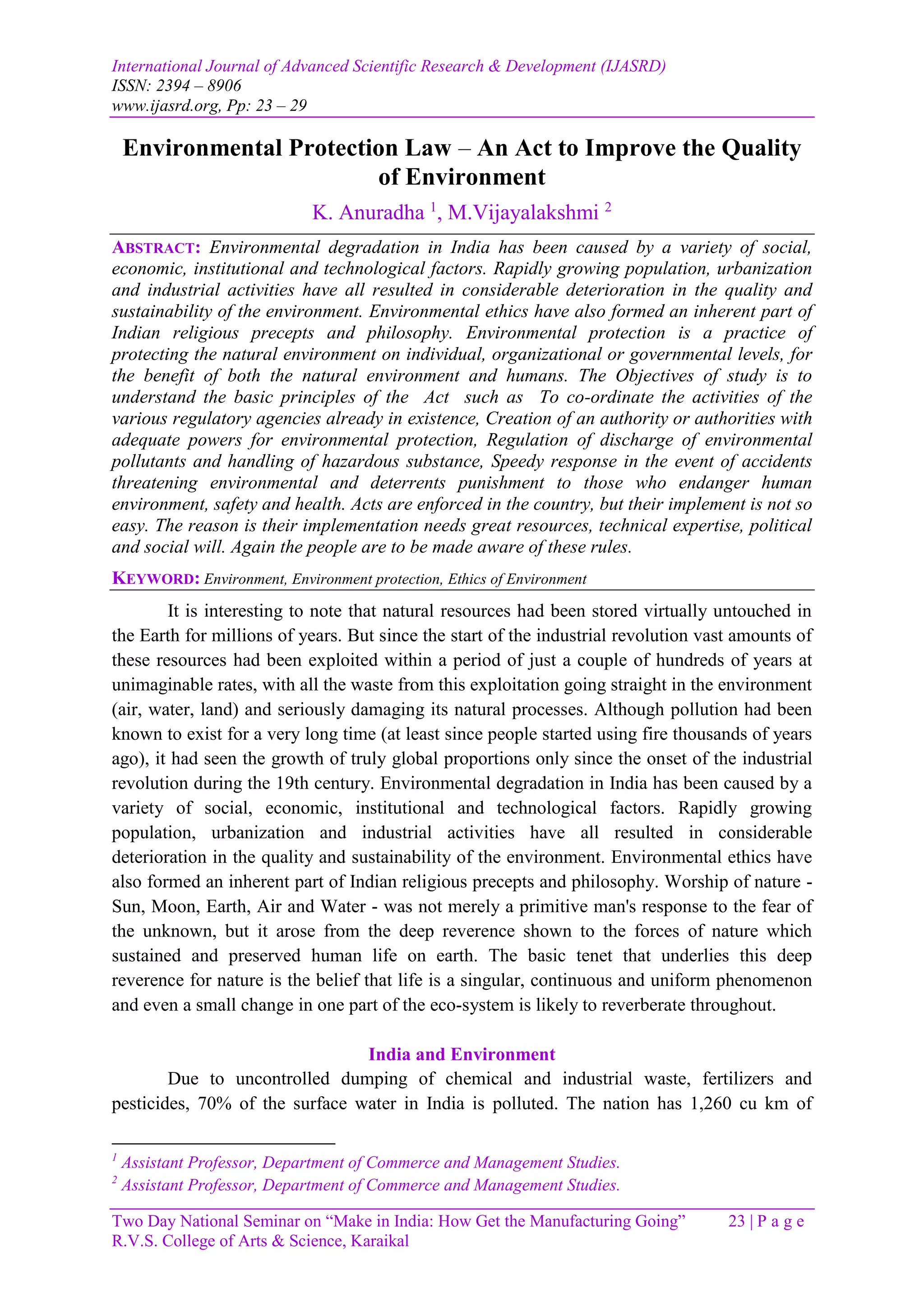
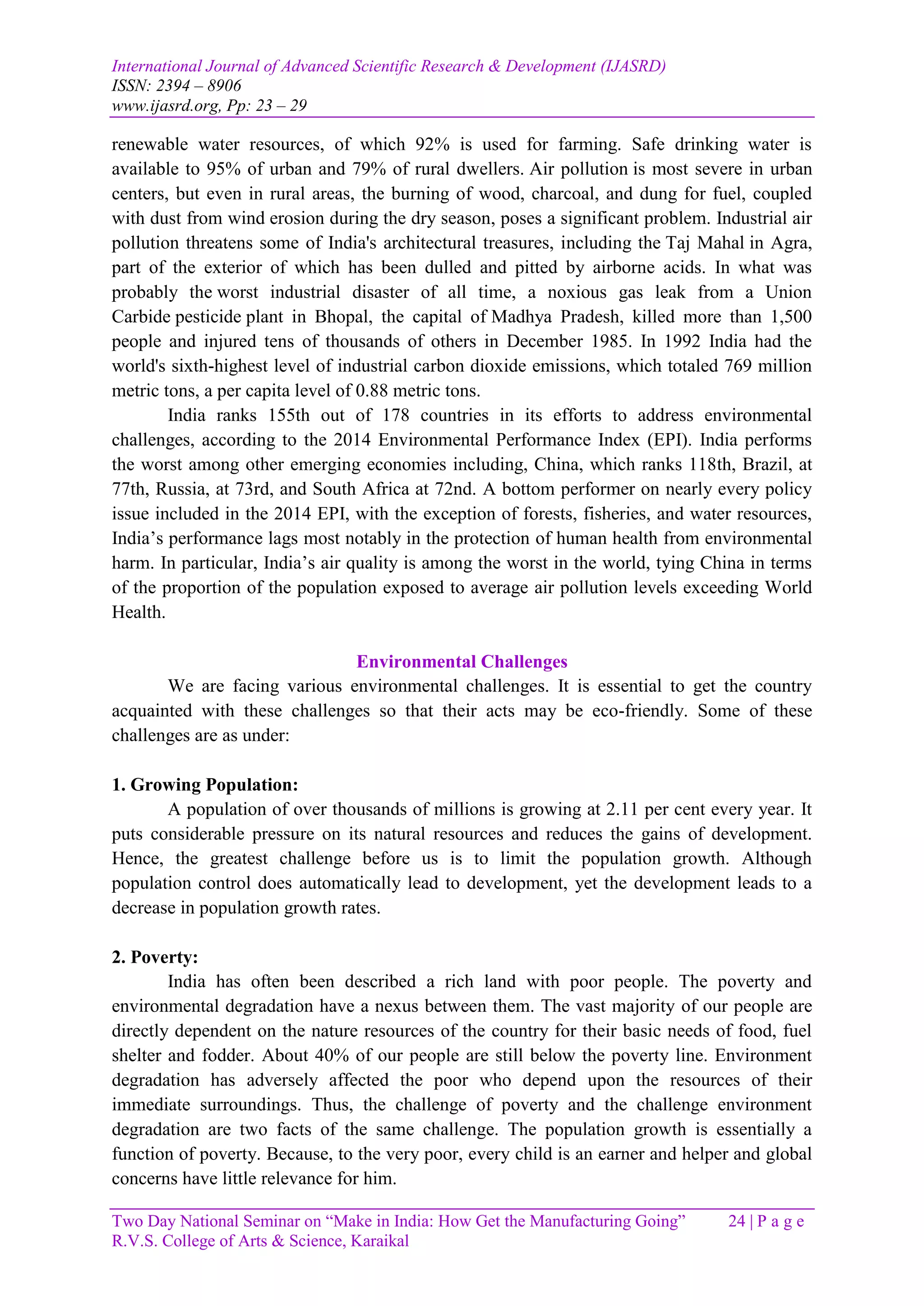
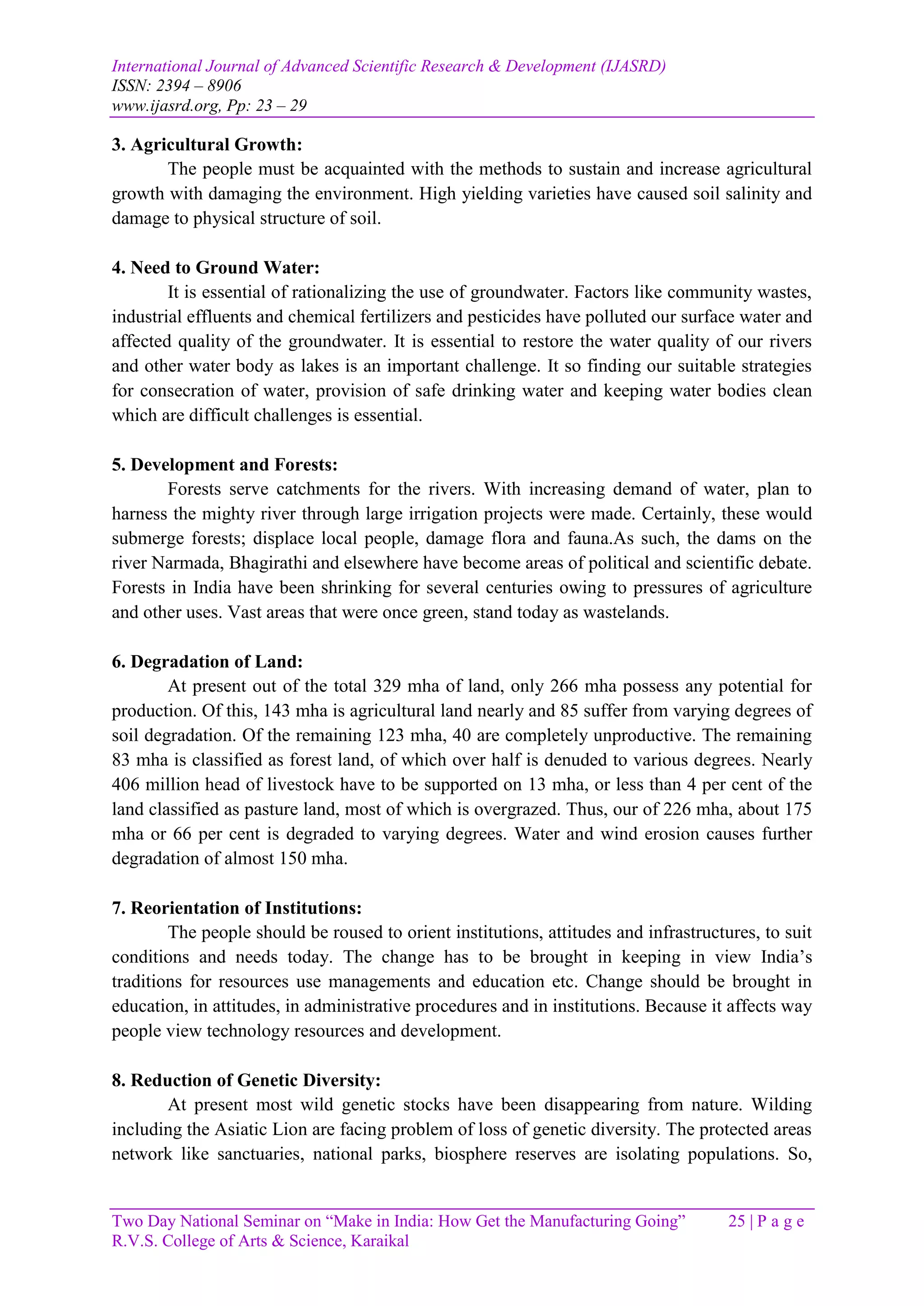
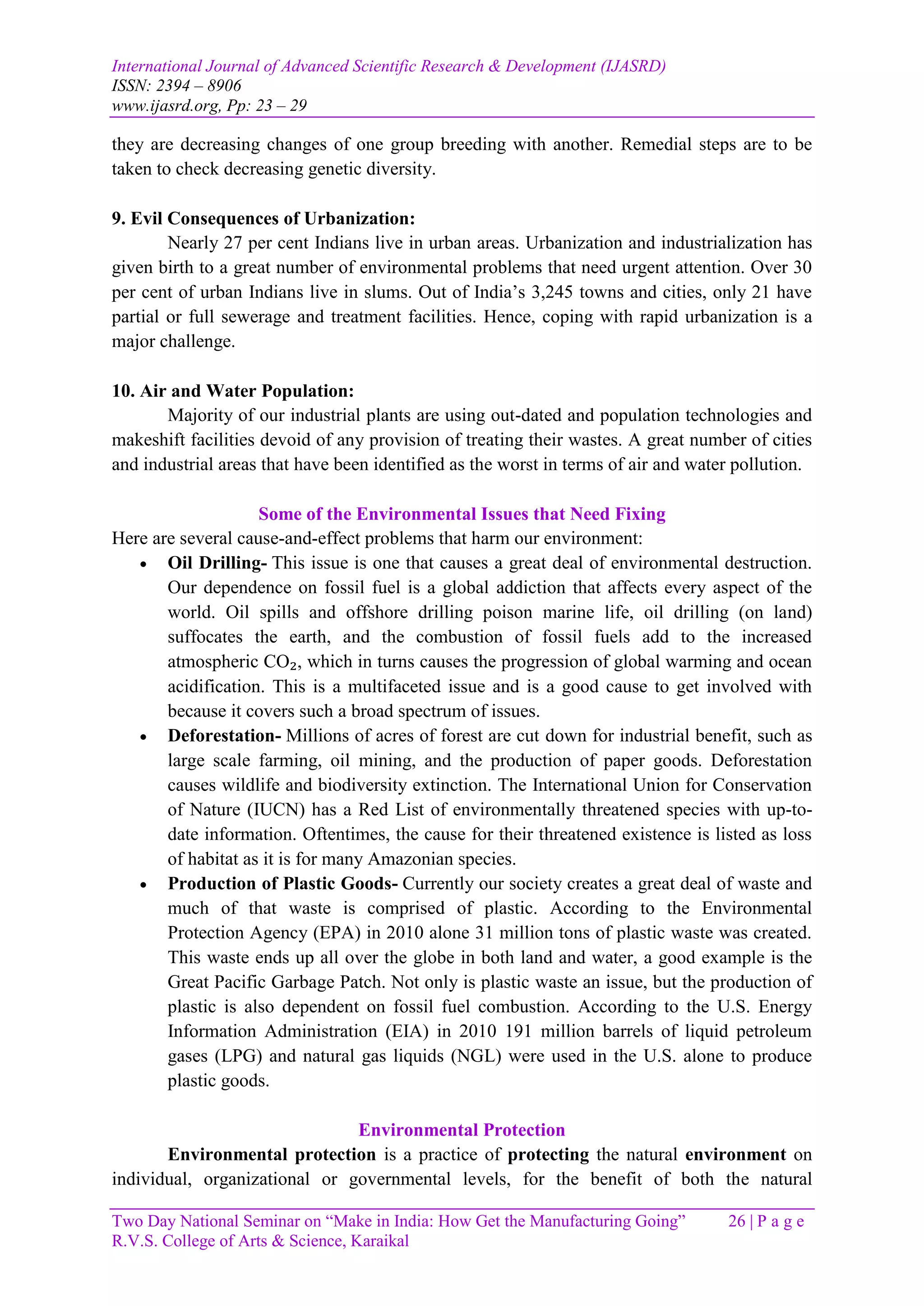
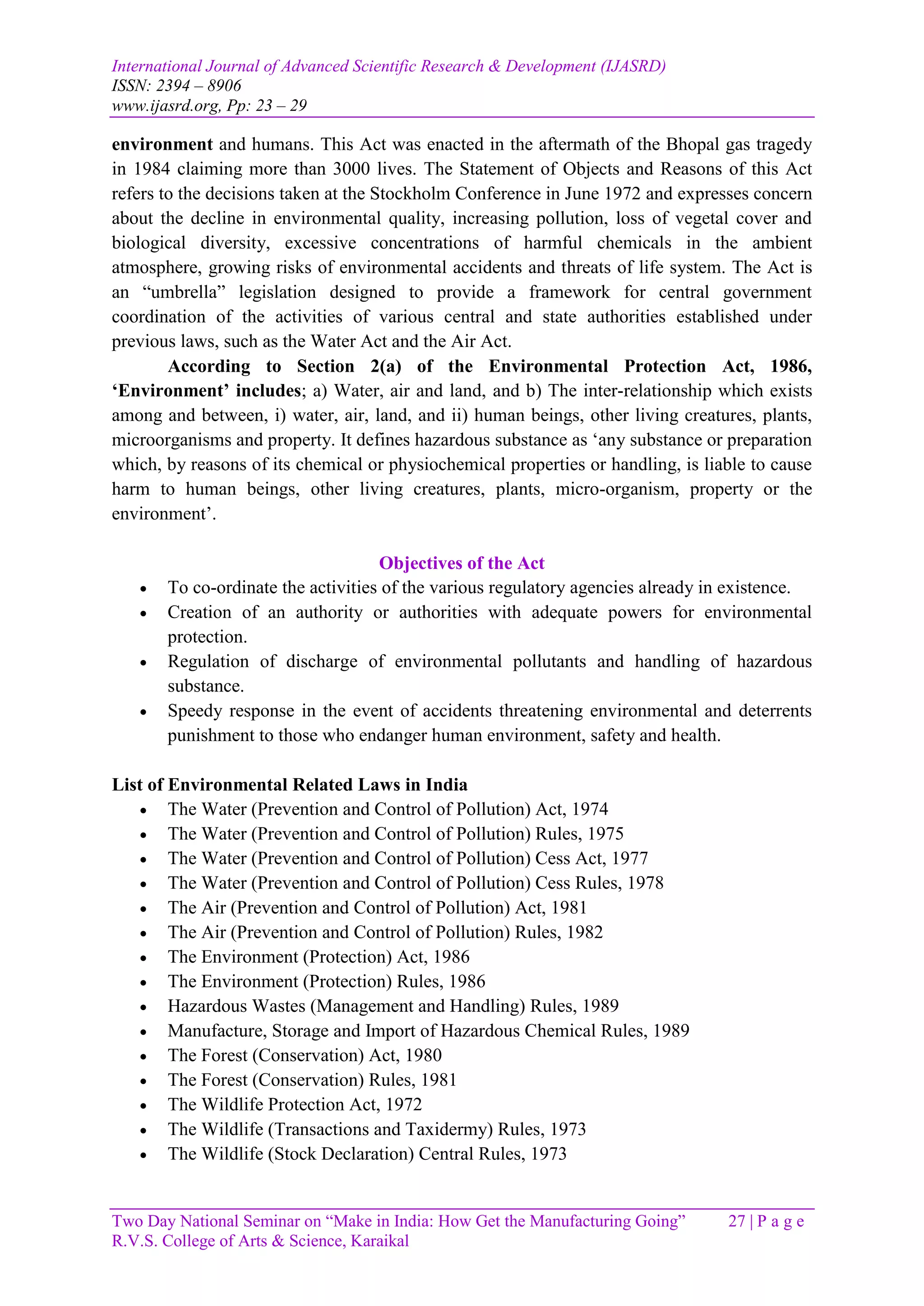
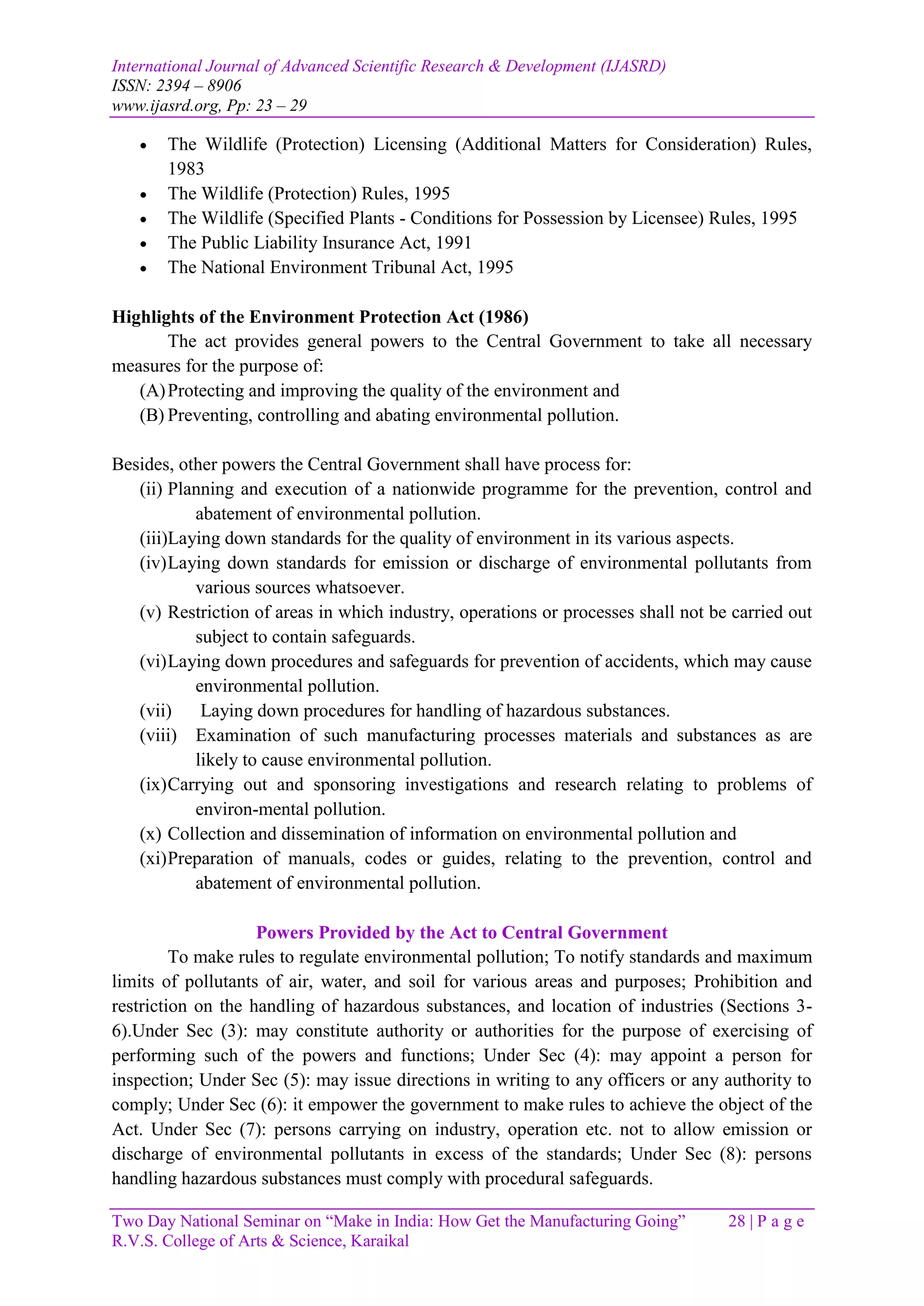
![International Journal of Advanced Scientific Research & Development (IJASRD)
ISSN: 2394 – 8906
www.ijasrd.org, Pp: 23 – 29
Two Day National Seminar on “Make in India: How Get the Manufacturing Going” 29 | P a g e
R.V.S. College of Arts & Science, Karaikal
Penalty
Whoever Person found to be the cause of pollution, may be liable for punishment for
a term which may extend to five years or with fine which may extend to one lakh rupees or
both (Sec 15, 16, 17). If not comply fine of Rs. 5000 per day extra, still if not comply for
more than one year, then imprisonment may extend up to 7 years.
Section 17 specifies that Head of the department/ incharge of small unit may be liable
for punishment if the owner /occupier produce enough evidence of innocence. The state govt.
have power to close or cancel or deny the authorization to run the factory/institution/hospital
whichever is causing pollution.
Conclusion
Acts are enforced in the country, but their implement is not so easy. The reason is
their implementation needs great resources, technical expertise, political and social will.
Again the people are to be made aware of these rules. Their support is indispensable to
implement these rules. We can protect our environment in many ways. Some of the
suggestions are instead of driving to work or school, take the bus, carpool, walk, or ride your
bike to cut down on greenhouse gas emissions. According to the EPA transportation adds to
33% of the total atmospheric CO₂. Consider investing in appropriate technology like clean
power (solar or wind), if not for your home maybe for a community center. This will also
help wean ourselves off fossil fuels. Buy reusable products such as glass bottles, reusable
bags and cups etc. Avoid buying paper towels, plastic bottles and bags. Start composting and
recycling, which will help cut down our waste production. Support local businesses and
farmers by only buying organic food at farmers markets. Make sure the food is pesticide free.
This will help your community become self-reliant.
References
[1] Arrow, Kenneth J. and F.H. Hahn, 1971. General Competitive Analysis, Holden-Day,
Sanfrancisco
[2] Bator, F.M., 1958. ‘The Anatomy of Market Failure’, Quarterly Journal of Economics,
Augus
[3] "The Asian Brown Cloud: Climate and Other Environmental Impacts". United Nations
Environmental Programme. 2002
[4] "Gridlocked Delhi: six years of career lost in traffic jams". India Today. 5 September
2010.
[5] "CO2 Emissions from Fuel Combustion Highlights, 2011 Edition". International Energy
Agency, France. 2011.](https://image.slidesharecdn.com/rvs006-150607015037-lva1-app6892/75/Environmental-Protection-Law-An-Act-to-Improve-the-Quality-of-Environment-7-2048.jpg)